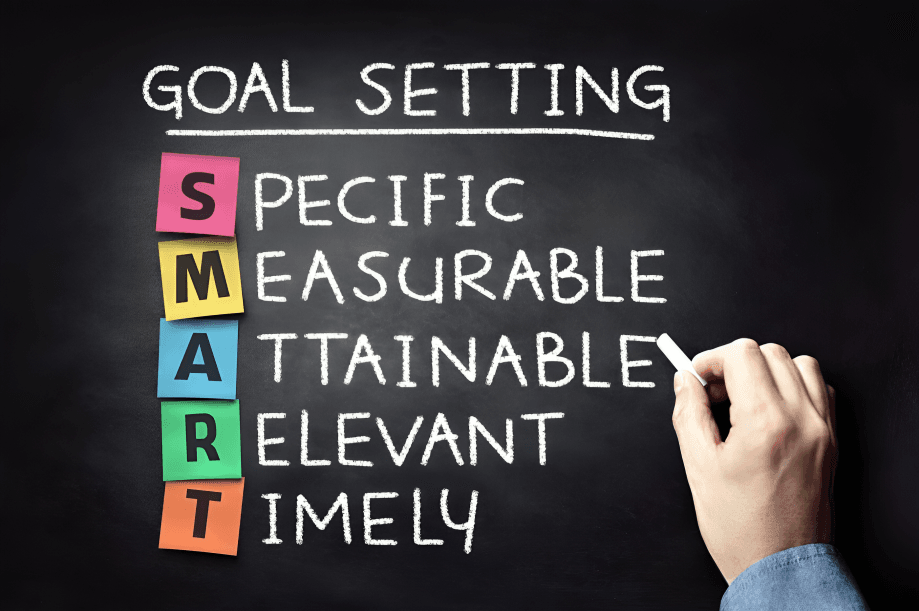
“
The power of visualization & goal-setting is a transformative practice that can help you unlock your full potential. By vividly imagining your success and setting clear, achievable goals, you can create a roadmap for turning your aspirations into reality.1
1
”
Visualization and goal-setting are essential tools for success, both mentally and practically. They turn abstract ideas into achievable realities, enabling individuals to stay motivated and organized on their paths to success. 1
Visualization connects the mind to the goal, making success feel achievable. Imagining success creates a mental blueprint, enhancing focus and motivation to bring the desired result into reality. 2
Goal-setting breaks down big ambitions into smaller, actionable steps, which helps avoid distractions. It provides clarity and a clear roadmap, fostering progress and a sense of accomplishment along the way. 3

Athletes and leaders use visualization to boost performance. By mentally rehearsing success, they strengthen motivation, resilience, and confidence, allowing them to overcome challenges and perform at their best.
Visualization activates the mind and body connection, strengthening performance. When the brain visualizes success, it prepares itself, improving overall efficiency and clarity in executing tasks toward the goal. 4
Goal-setting turns abstract desires into measurable targets. With clear goals, individuals have concrete steps to focus on, avoiding overwhelm and achieving progress toward larger dreams, one small step at a time. 5
Stoic philosophy emphasizes goal-setting as a way to focus on what is within one’s control. It aligns with personal growth, helping individuals take deliberate actions toward meaningful achievements. 6
Studies show that visualization increases the likelihood of success. Mental practice enhances focus, reduces stress, and helps the brain activate pathways necessary for real-world achievement, bringing goals closer to reality. 7
Visualization creates a mental rehearsal that prepares individuals for challenges. It strengthens problem-solving skills, boosts resilience, and allows individuals to approach obstacles with greater confidence and adaptability. 8
Dr. Maxwell Maltz, a psychologist, suggested that the brain can't distinguish between real and imagined experiences. Visualization trains the brain, helping individuals act as if their goals are already achieved, accelerating success. 9

Goal-setting helps create a structured routine. It fosters consistency, prevents procrastination, and focuses energy on meaningful activities, ensuring that every effort aligns with long-term goals.
Visualization encourages positive thinking. When we visualize success, we spark a positive emotional response, which fuels motivation and enhances the drive to reach goals and overcome obstacles with confidence. 10
Breaking goals into smaller tasks allows for easier tracking. Every small achievement provides a sense of progress, motivating individuals to continue working toward their larger objectives with renewed determination. 11
Clear goals provide direction and focus. Without specific goals, individuals may feel lost or unfocused, decreasing motivation and making it harder to prioritize the actions needed to succeed. 12

Successful individuals, from athletes to business leaders, rely on daily visualization. This practice helps them overcome challenges and maintain the mental strength needed to achieve their goals despite difficulties.
Visualization helps with decision-making by allowing individuals to mentally process potential outcomes. This practice sharpens judgment, enabling quicker, more informed decisions when facing real-life challenges. 13
Aristotle emphasized the importance of intentional action toward goals. Setting clear objectives aligns one's actions with a higher purpose, resulting in fulfillment and a meaningful pursuit of success. 14
Specific and measurable goals keep individuals focused. By defining clear milestones, individuals can track progress, make adjustments, and stay motivated as they move closer to their ultimate objectives. 15
Doctors believe that visualization aids physical recovery. By visualizing healing, patients can speed up recovery, using the power of the mind to support the body in overcoming injury or illness. 16
Achieving goals and visualizing success boosts self-esteem and confidence. Reaching milestones strengthens belief in one’s abilities, reinforcing the idea that dedication and visualization lead to the realization of even the biggest dreams. 17


